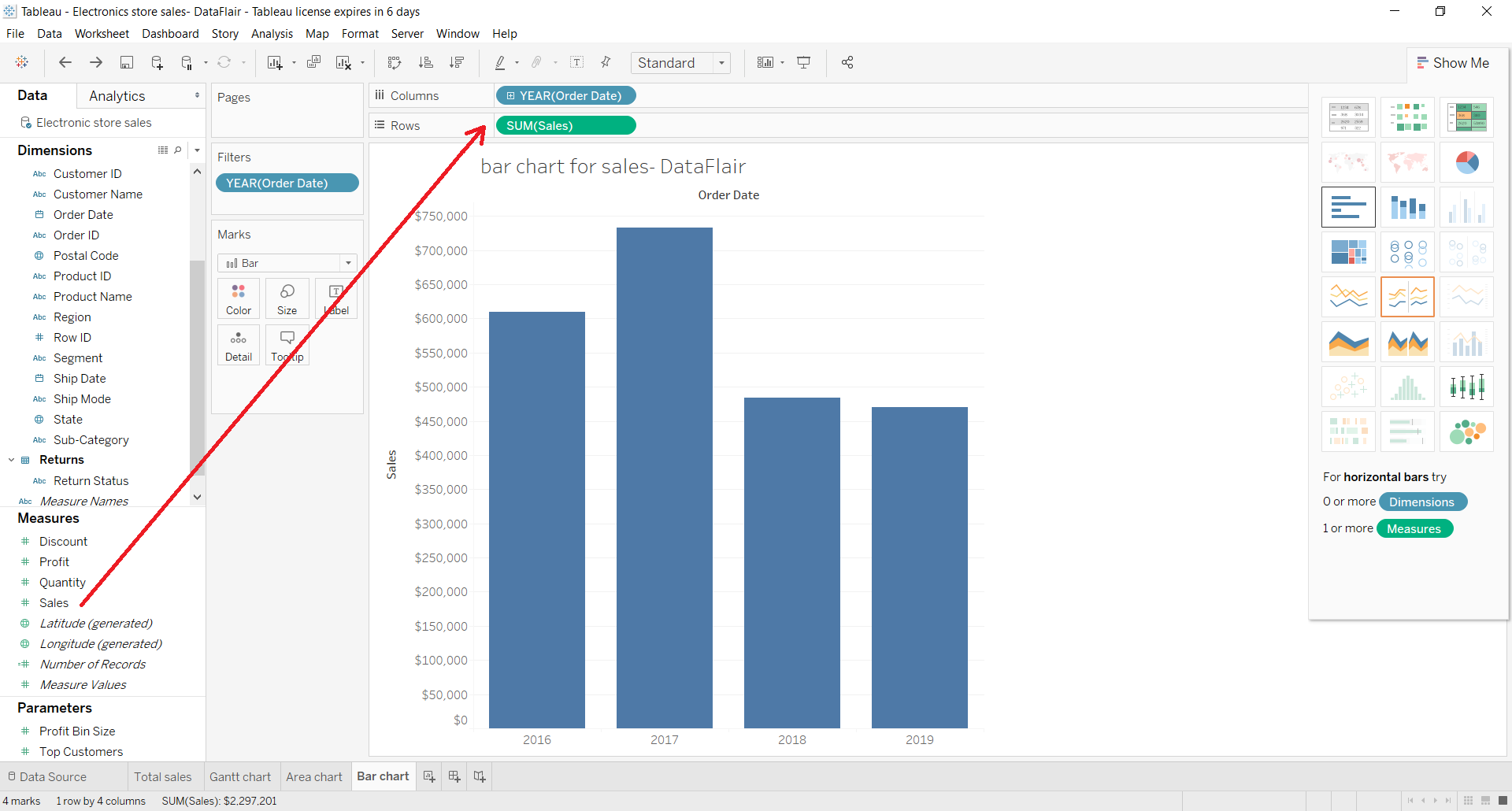If you have a densely packed visualization like a. The bullet graph is generally used to compare a primary measure to one or more other measures in the context of qualitative ranges of performance such as poor satisfactory and good. Heres the default bar chart after double-clicking the Profit measure then double-clicking the Region dimension in the Sample Superstore dataset. To make a horizontal bar chart drag a dimension onto the rows shelf and a measure onto the columns shelf. There are a few things we could do to customise this chart we could add labels for example to see what the value for each bar is. Tableau Layout containers. Scan the listing on the left select a vertical column chart and hit OK. A diverging bar chart in tableau vertical bar chart horizontal tableau chart erfly tableau tip e between groups of build a bar chart tableau. True This is vertical. Drag another dimension to the Filter section and select two items to compare.
Drag another dimension to the Filter section and select two items to compare. Our bar chart shows the penetration of Internet usage of countries with 200 million people or more. How To Reorder Stacked Bars On The Fly In Tableau Playfair. Edited When right clicking it is showing me. The bullet graph is generally used to compare a primary measure to one or more other measures in the context of qualitative ranges of performance such as poor satisfactory and good. Creating one in Tableau is deceptively simple and is probably the first chart that a new user is likely to create in Tableau. By default Tableau will label your marks with the primary measure in the Row shelf. Double-click an axis to open the Edit Axis dialog box and change the axis configuration and formatting. A bullet graph is a variation of a bar graph developed to replace dashboard gauges and meters. Now lets click on the Show Mark Labels button in the toolbar at the top of the Tableau interface.
First of all you need to create your different charts on separate sheets. There is one category of value options on the x-axis and the quantities measured by the length of the b. Right-click the second measure on the Rows shelf and select Dual Axis On the Marks card labeled All set the mark type to Bar in the dropdown menu On the Marks card labeled SUM Sales Click Size and then adjust the slider to change the width Repeat step 4 on the Marks card. Build A Bar Chart Tableau. Creating one in Tableau is deceptively simple and is probably the first chart that a new user is likely to create in Tableau. How To Reorder Stacked Bars On The Fly In Tableau Playfair. Double-click an axis to open the Edit Axis dialog box and change the axis configuration and formatting. If you have a densely packed visualization like a. In this example the Profit field a continuous measure on the Rows shelf creates a vertical axis and the Order Date field a continuous date dimension on the Columns shelf creates a horizontal axis. Tableau Diverging Bar Chart Instructions.
Now lets click on the Show Mark Labels button in the toolbar at the top of the Tableau interface. Build A Bar Chart Tableau. Some of these variables are better suited to vertical. If you took a research methods or statistics class back in college then you might remember learning about terms like nominal ordinal interval or ratio variables. Creating one in Tableau is deceptively simple and is probably the first chart that a new user is likely to create in Tableau. There is one category of value options on the x-axis and the quantities measured by the length of the b. It depends on what type of variable youre graphing. For example you can use a diverging bar chart in Tableau to show the difference in sales from one year to the next. Vertical groups worksheets and dashboard components top to bottom down your page and allows you to edit the width of all elements at once. I can only guess that type.
Double-click an axis to open the Edit Axis dialog box and change the axis configuration and formatting. Here I have used the Superstore data and created a map and a bar chart showing the sum of sales per state. Drag a dimension field into the Rows section. Your horizontal bar chart will transpose itself on its axis and turn into a vertical column chart which is much more appropriate for an ordinal variable like age ranges. For example you can use a diverging bar chart in Tableau to show the difference in sales from one year to the next. If like me pre-Data School you never used containers you will then continue to drag the other objects. First of all you need to create your different charts on separate sheets. Tableau Layout containers. To start lets take a simple horizontal bar chart. Pull one measure to the Columns section.
